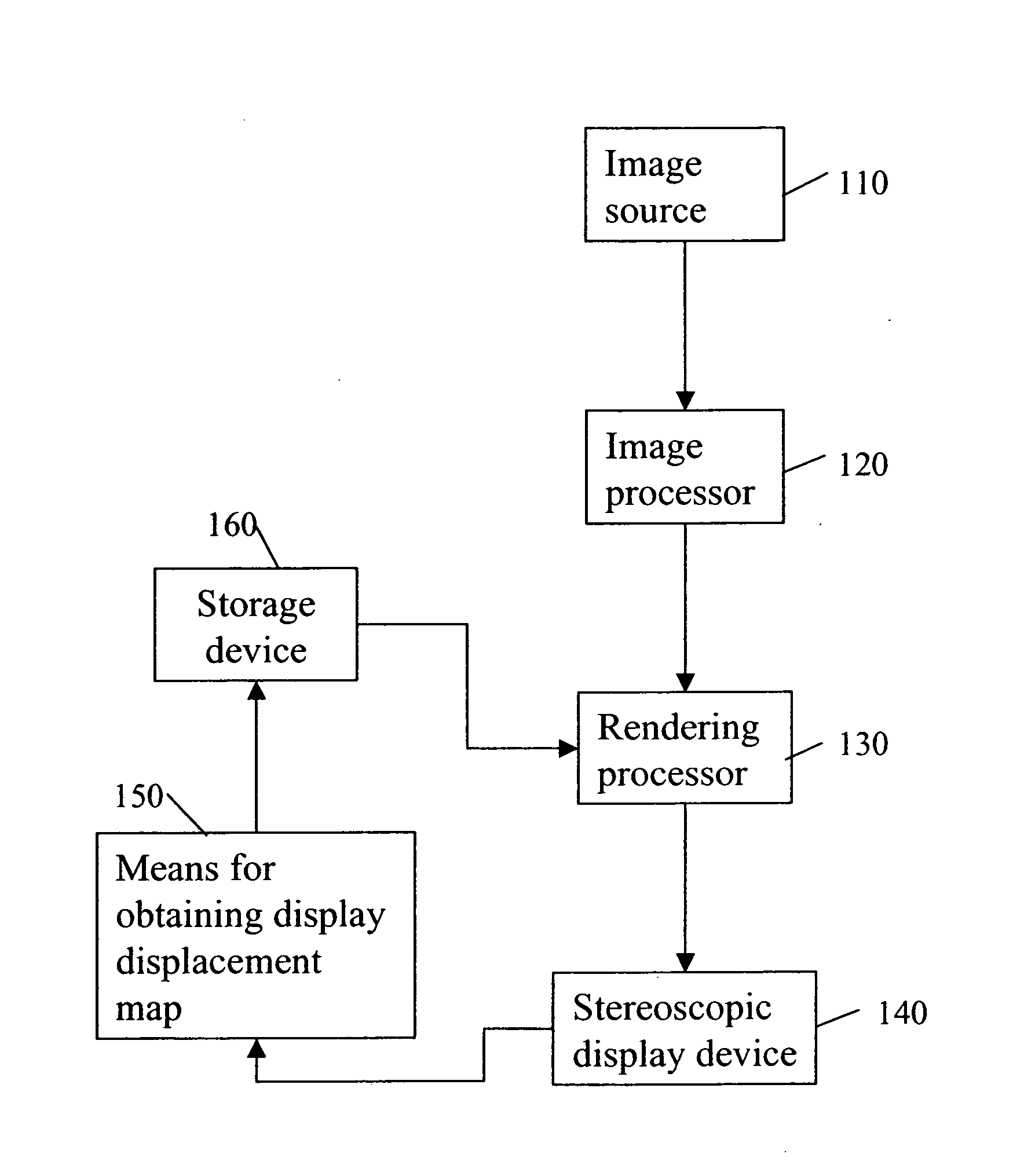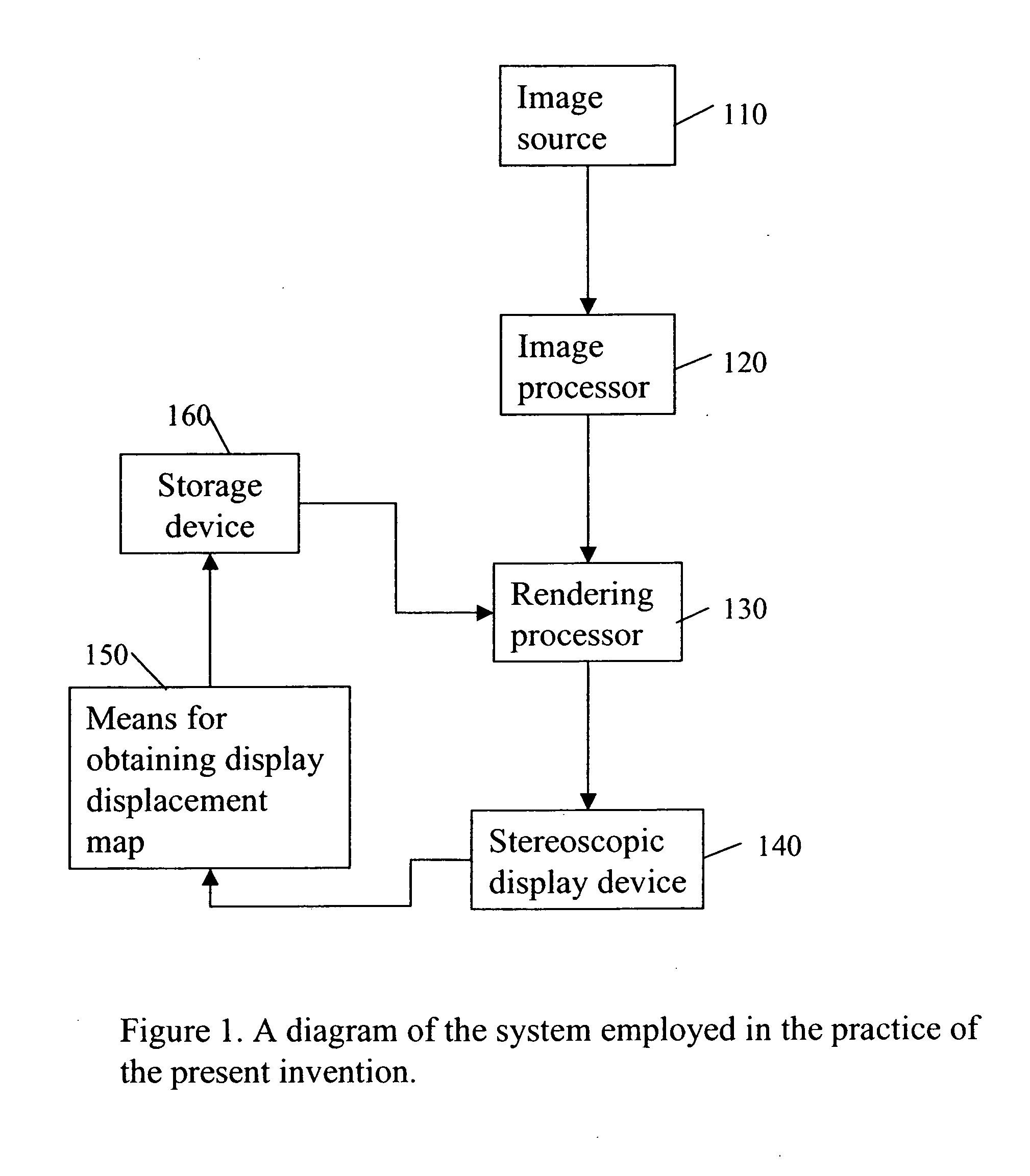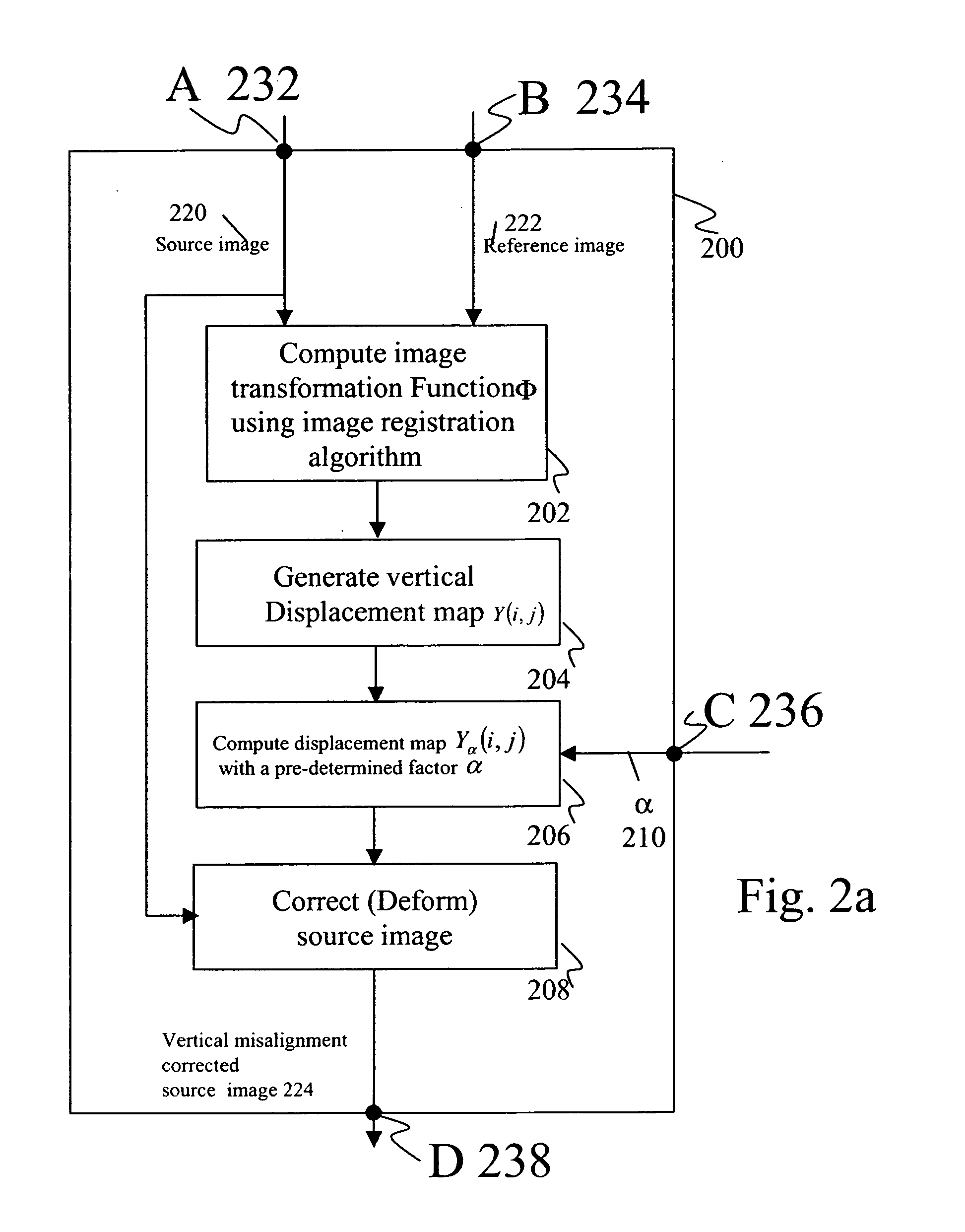Method for rectifying stereoscopic display systems
a stereoscopic display and display system technology, applied in the field of stereoscopic capture, processing, and display systems, can solve the problems of reducing the ability of viewers to fuse, reducing the usefulness of stereoscopic display systems, and viewers being likely to experience visual fatigue and other undesirable side effects, so as to achieve the effect of minimizing spatial misalignmen
- Summary
- Abstract
- Description
- Claims
- Application Information
AI Technical Summary
Benefits of technology
Problems solved by technology
Method used
Image
Examples
Embodiment Construction
[0024] The present description is directed in particular to elements forming, part of, or cooperating more directly with, apparatus in accordance with the invention. It is to be understood that elements not specifically shown or described may take various forms well known to those skilled in the art.
[0025] The present invention is directed towards a method for rectifying misalignment in a stereoscopic display system comprising: providing an input image to an image processor; creating an image source displacement map; obtaining a display displacement map; and applying the image source displacement map and the display displacement map to the input image to create a rectified stereoscopic image pair. The image source displacement map and the display displacement map may be combined to form a system displacement map and this map may be applied to the input image in a single step. Alternatively, the image source displacement map and the display displacement map may alternately be applie...
PUM
 Login to View More
Login to View More Abstract
Description
Claims
Application Information
 Login to View More
Login to View More - R&D
- Intellectual Property
- Life Sciences
- Materials
- Tech Scout
- Unparalleled Data Quality
- Higher Quality Content
- 60% Fewer Hallucinations
Browse by: Latest US Patents, China's latest patents, Technical Efficacy Thesaurus, Application Domain, Technology Topic, Popular Technical Reports.
© 2025 PatSnap. All rights reserved.Legal|Privacy policy|Modern Slavery Act Transparency Statement|Sitemap|About US| Contact US: help@patsnap.com



